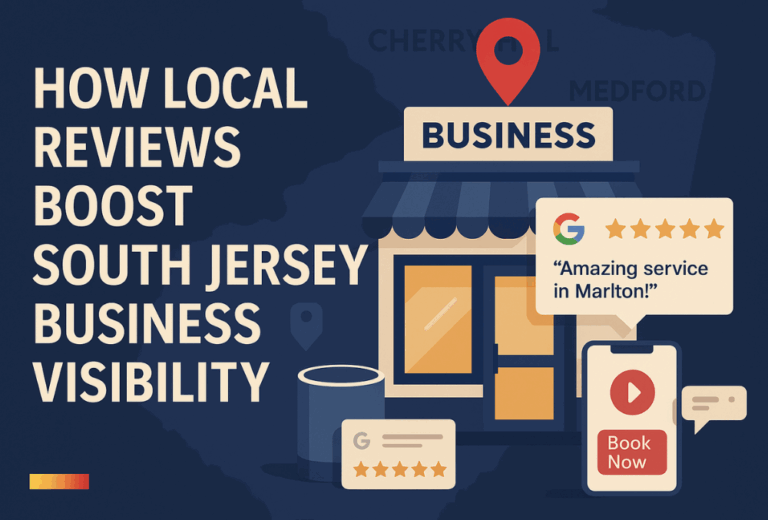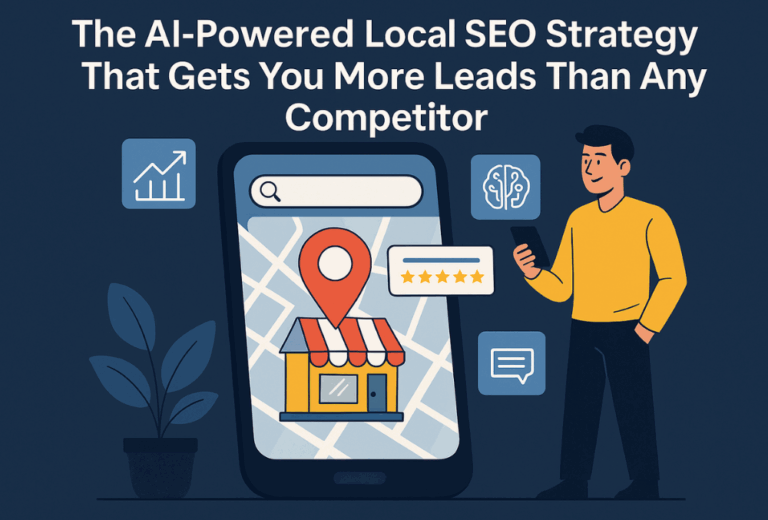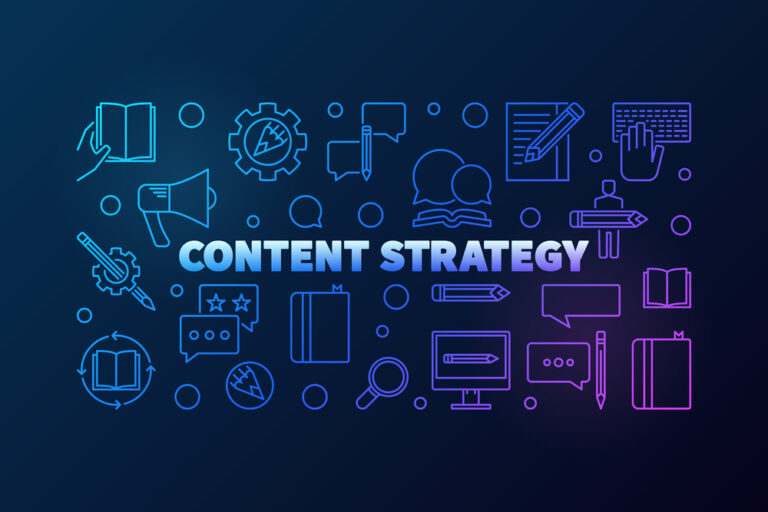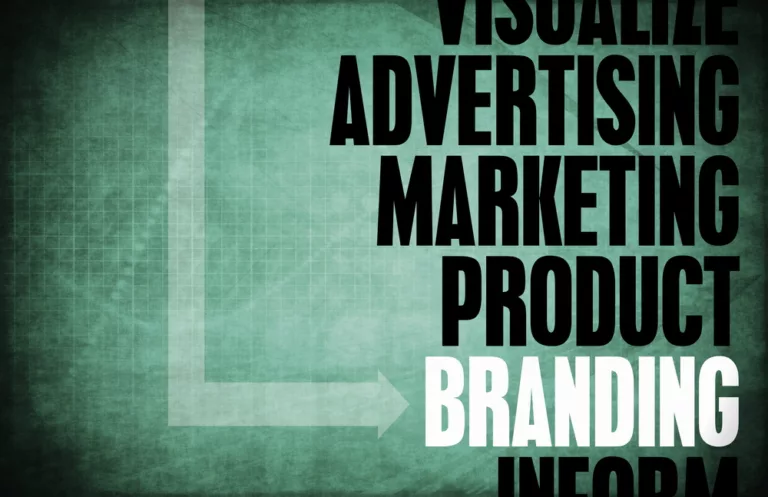You’re investing in your website, social media, and maybe even...
Read MoreCategory:
Brand Building
Brand Building Services in South Jersey That Build Trust & Drive Growth
The AI-Powered Local SEO Strategy That Gets You More Leads Than Any Competitor
Introduction Picture this: A potential customer just a few blocks...
Read MoreHow to Tell Your Business Story in a Way That Attracts Customers
Introduction The Power of Storytelling in Business: In a world...
Read MoreBranding vs. Marketing: What’s the Difference and Why It Matters
Introduction: Branding and Marketing—Are You Getting Them Right? If you’re...
Read MoreHow to Build a Personal Brand on LinkedIn Without Posting Every Day
🔍 Summary Box Core Principle: You don’t need to post...
Read MoreWhich Content Strategy is Best? A Deep Dive into Top Marketing Strategies
📚 Quick Summary: Which Content Strategy Is Best for You?...
Read MoreThought Leadership vs. Trend Chasing: Why Naval Ravikant Chooses Evergreen Content
📚 Quick Summary: Why Naval Ravikant Bets on Evergreen Content...
Read MoreHow to Handle Negative Reviews Online
Reviews have significant power over how people perceive your business....
Read MoreHow Can Customer Reviews Boost Your Online Presence?
If you have a business, there is no doubt you...
Read MoreHow to Build a Strong Online Brand Identity for Your Business
Too often, the mindset of business owners is that their...
Read MoreLooking to build a brand that customers trust and remember? At Digital Marketing Group in Marlton, NJ, we create brand identities that fuel long-term business growth — online and offline.
What Is Brand Building and Why It’s Essential for South Jersey Businesses
Brand building is more than just a logo — it’s the strategy behind how your business is perceived, remembered, and chosen.
For small businesses and regional brands in South Jersey, a strong brand:
Creates emotional trust with customers
Differentiates you from your competitors
Increases referrals and repeat business
Supports all your marketing efforts
✅ Quick Answer:
Brand building combines strategy, messaging, design, and experience to shape how people feel about your business.
Why Local Brands in Marlton & South Jersey Need a Strong Identity
Local markets are saturated — especially here in South Jersey. Whether you’re in trades, healthcare, real estate, or retail, you’re likely not the only one doing what you do.
But how you show up is what sets you apart.
A strong brand:
Helps people remember you
Creates credibility before they even call
Drives higher conversion on ads, your website, and social media
Based in Five Greentree Centre, Marlton, DMG helps local businesses connect with their audience through a brand they trust.
See how we use Local SEO to strengthen brand visibility »
Our Brand Building Services: From Strategy to Storytelling
We offer a full suite of brand-building solutions tailored for small businesses and growing brands in South Jersey:
Brand Strategy
→ Defining who you are, your target audience, and how to stand out
Logo Design & Visual Identity
→ Logos, color palettes, typography, icon systems, and brand assets
Messaging & Voice
→ Tone of voice, value propositions, taglines, and messaging guides
Brand Guidelines
→ A full document that keeps your brand consistent across all platforms
Social Media Branding
→ Profile images, banners, and post templates that reflect your visual identity
Website Branding
→ Aligning your digital presence with your brand identity
Reputation Management
→ Local reviews, online reputation, and Google Business Profile alignment
Need web design too? We also offer complete website packages for South Jersey service businesses »
How DMG Builds Memorable Brands That Convert
Our 5-step proven process ensures consistency, creativity, and performance:
Brand Discovery
We get to know your goals, values, and target customers.Strategic Positioning
We craft a unique positioning framework that sets you apart.Creative Development
From logos to taglines to voice, we create a cohesive brand package.Activation Across Channels
We align your brand on your website, social media, Google profile, and more.Ongoing Optimization
Your brand isn’t static. We help it evolve as your business grows.
Bonus: Our team uses AI-enhanced brand audits and heatmap tools to analyze visual impact and message clarity.
Brand Building Success Stories from South Jersey
Case: Local HVAC Company in Cherry Hill
- Before: Generic name, mismatched visual identity, low engagement
- After: Full rebrand + new website → 3X web traffic, 2X lead conversions
Case: Boutique Law Firm in Gloucester County
- Before: Outdated visuals and unclear messaging
- After: Rebrand + local content strategy → 50% increase in new client calls
Explore more client results on our blog »
Why Digital Marketing Group Is South Jersey’s Brand Building Expert
With over 20 years of experience, we’ve helped businesses across South Jersey grow with clarity, consistency, and confidence.
- Local Experts – based in Marlton, NJ
- AI-Enhanced Branding + Human
- Creativity
Proven Strategy - Custom Visual Design
- Full-service team for brand, content, SEO, and web
When you work with DMG, you’re not just hiring a designer — you’re getting a branding partner who understands the unique challenges and opportunities in your local market.
🔗 Connect with us on LinkedIn and Facebook
FAQs About Brand Building
What is brand building?
Brand building is the process of developing a business’s identity — including visuals, messaging, tone, and customer experience — to create awareness, loyalty, and trust.
How long does brand building take?
Most of our projects take 4–8 weeks, depending on complexity and deliverables.
Is brand building the same as marketing?
No — branding is who you are; marketing is how you promote yourself. Branding should guide every marketing decision.
Do I need a full rebrand?
Not always. Sometimes a refreshed logo or clarified message can make a big difference.
Can you help with logo design only?
Yes — but we always recommend aligning your logo with a strategic brand identity for the best results.
Ready to Build a Brand That Sticks?
“Your brand isn’t just how you look — it’s how you make people feel.”
If you’re ready to finally get clear on your brand — and grow with confidence — we’re here to help.
Schedule your free 30-minute Brand Discovery Call
Includes a free mini audit of your existing brand identity and visuals
Like What You Read? Get the Strategy That Works
Turn expert insights into action. Book a free consultation and discover how we can help grow your business with proven digital strategies.
Book a Free Consultation








